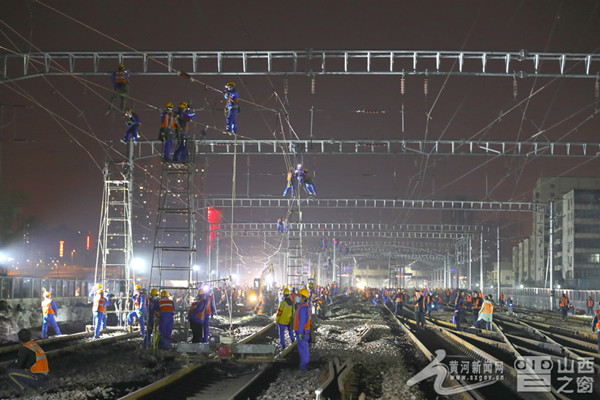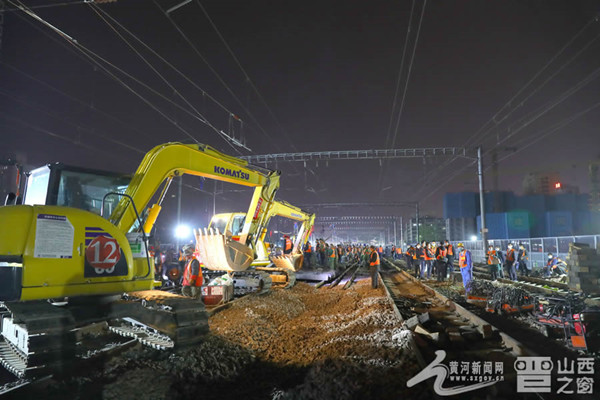Old Taiyuan Railway Station gets a revamp
Updated: 2020-04-01

Workers get busy finishing off the renovation of Taiyuan Railway Station on March 31. [Photo/sxgov.cn]
Taiyuan Railway Station -- with a history of more than 110 years, in the capital of North China's Shanxi province -- successfully expanded its capacity after a major renovation finished on March 31, creating better infrastructure for the resumption of operations and better transport capacity with the upgrade of rails, according to rail officials.
Located at the intersection of several major north-south and east-west railways -- including the Shijiazhuang-Taiyuan Railway and Datong-Xi'an High-speed Railway, Taiyuan Railway Station is a vital railway hub in North China, handling about 110 round-trip trains going to 98 cities across the country every day.
In recent years, with successive access to more railway services, Taiyuan Railway Station has been severely restricted in terms of its transport capacity by the original platforms and line layout.
Project construction company China Railway Taiyuan Group added one platform and two lines, based on the existing seven platforms and 10 rail tracks, to clear the bottlenecks.

Workers and excavation pitch in with the renovation job at Taiyuan Railway Station. [Photo/sxgov.cn]
"After the expansion, high-speed trains from Beijing and Datong will pass through the outer line, eliminating the impact on other lines and passengers' getting on and off trains," said Wang Zhenwang, a staff member of Taiyuan Railway Station.
With the rail line layout and microcomputer-driven rail signal system optimized after the reconstruction, the intervals between high-speed trains and conventional trains will be reduced by more than 1 minute and the function of central Shanxi's railway hub will be further enhanced, officials said.
They added that the station after the expansion will offer passengers a better travel experience, greatly improve the passenger transportation infrastructure in Shanxi province and help accelerate economic and cultural communications between Shanxi and other provinces.



